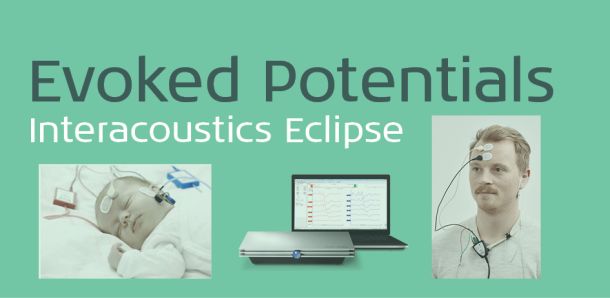Audiology in Brief #4 - CROS/BiCROS Fitting
The presentation of aidable single sided hearing loss is not as common as the classic symmetrical sensorineural losses seen in the clinic. Often a refresher is needed on these types of fittings.
The goal of the CROS/BiCROS fittings is to ensure that the signal on both sides of the head sound similar. If a client has worse hearing in one ear, we want to ensure that the client can hear if someone is speaking on the worse side.
CROS stand for the Contralateral Routing Of Signal: It is good for unilateral hearing losses, single sided deafness. It is a useful form of amplification when there is a severe/profound loss in the poorer ear and good hearing in the other ear which does not need amplification. The client wears a transmitter in the poorer ear and a receiver in the good ear.
BICROS is very similar to CROS. However, the Bi stands for Bilateral, because the “good” ear has an aidable hearing loss.
The following points apply to the whole testing procedure and will help understanding what is being measured in the different conditions:
- The probe microphone is always placed in the better or normal hearing ear, never in the unaidable ear.
- The loudspeaker is positioned at 45-90 deg to the measured ear. The same angle is used for each measurement.
- The reference microphone is placed on both ears and activated on the same side of the head as the loudspeaker.
- The same stimulus is used for all measurements
Cros hearing aids
The objective of this measurement is to make signals from the unaided side of the head sound the same as signals from the side of the better or normal hearing ear.
1. Calibrate and insert both probe microphones.
2. Measurement One:
Measure the REUR/REUG of the best ear with the patient at 45⁰ or 90⁰ to the speaker. Note: The CROS system is not added to the ear at this point. (The Callisto and Affinity software has a CROS/BiCROS specific protocol).
Make sure the position of the speaker is consistent between the two measurements.
3. Measurement Two:
Move the patient so that the loudspeaker and reference microphone are to the side of the unaidable ear (-45⁰ or -90⁰ relative to the poorer ear).
Add the CROS system to your patient’s ear and turn it on. You must also enable the CROS setting in your Affinity/Equinox or Callisto Suite (shown in the image below).
Run the ‘CROS Response’ measurement in the software. The CROS Setting is available in the following location of your Suite.
Both measurements obtained (Better Ear REAR/REIG and the CROS response) should be similar.
You now need to adjust your CROS system until the CROS response from the second measurement overlaps the REUR/REUG from the first measurement. The first measurement is the target curve that you are matching to.
When adjusting the CROS aid in the hearing aid software, you can use our “on top mode” to view both the hearing aid software and REM screen at the same time. Look for this icon.
BiCROS Hearing Aids
The objective of this test is similar to fitting a CROS, however there is a hearing aid on the better ear for which we need to take consideration for.
Firstly, you would fit the hearing aid without the CROS features enabled to a suitable algorithm.
You use the same procedure as for CROS set up except for the first measurement, ensure that the hearing aid is present in the better ear.
Case study : Mrs. M – Single Sided Deafness
A client Mrs. M (aged 57 years) who has long standing Meniere’s disease in her left ear, and normal hearing in her right ear was finding increasing difficulty hearing at work as her hearing dropped with each Meniere’s attack. A recent audiogram revealed a severe hearing loss in the left ear with only 20 % speech intelligibility. Her right ear was in the normal hearing range. She was fitted with an Oticon CROS hearing aid to help in this situation. She found that with all the new features in the Oticon CROS, she was able to hear customers approaching her on her left side and could follow the conversation. She also enjoys the twin link dual streaming feature to watch TV, while still being able to talk to her husband. She enjoys commenting on the TV program together.
Here are some of the highlights of Oticon's new CROS fitting aid. It can be swet up as both a CROS or BiCROS fitting.
Features include:
- Open Sound Navigator – delivering a 360° listening experience by balancing the sound in the environment and removing extraneous noise.
- New rechargeable versions to ease the burden of battery changes and down time.
- Twin link dual streaming –The aid can connect to an external audio stream at the same time as sound transmission from poorer ear to better ear. For example; clients can watch TV while talking to someone sitting on their poorer side.
Keen to learn more about how Oticon hearing aids together with Interacoustics CROS measurements can lead to a successful CROS fitting? Reach out to your local Oticon or Interacoustics clinical team to find out more.
![]()
Latest Articles

ABR Interacoustics Eclipse

ASSR and ABR Comparison on the Eclipse
